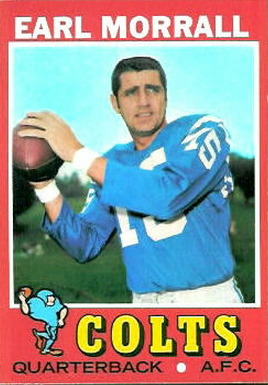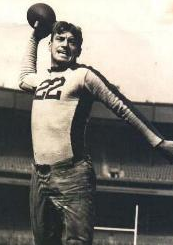In an eye blink Sunday, Cardinals fans went from dreaming about winning a Super Bowl on their home field to wondering whether there might be room for them on the Arizona State bandwagon. That’s the usual reaction, gloom and doom, when a starting quarterback goes down, especially the quarterback of an NFL-best 8-1 team.
The Cardinals weren’t a lock to take the title, but the way Carson Palmer was playing — he was 12-2 in his previous 14 starts before blowing out his knee against the Rams — they were definitely on the short list. Their defense, after all, has allowed more than 20 points only once (and all but won the last game by scoring two touchdowns). But now they have to look to Drew Stanton for salvation, the 30-year-old QB who has thrown 280 career passes.
Wonders never cease in these situations, though, and that’s not just a phrase. It’s truly amazing how often a backup quarterback has either led a team to the NFL title or kept his club in contention until the starter returned to finish the job (or at least come close). We’re not talking about a miracle here and a miracle there. We’re talking one, two, three . . . a slew of examples.
Almost every decade has a story like this — beginning with 1934, the NFL’s third championship game, which was won by a backup quarterback wearing sneakers on the frozen turf. That would
be Ed Danowski, a rookie (and New York kid) who’d done more running than passing before the No. 1 QB, Harry Newman, got hurt with three games left in the season.
The Giants were so panicked by the loss of Newman that they arranged to borrow Warren Heller from Pittsburgh, which had completed its schedule. (Crazy, isn’t it? The Giants still had three games to play, and the Pirates, as they were called then, were already done.) But the league disallowed the transaction after some owners squawked, leaving the Giants’ fate in the hands of Danowski. He wound up leading them to a key win over the second-place Boston Redskins in his first start, and was one of the heroes of the victory over the Bears in the legendary Sneakers Game, throwing for one touchdown and running for another.
And that’s just one for-instance. Here are 11 others that come to mind:
● Tobin Rote, 1957 Lions — Rote had been splitting time with Bobby Layne when Layne broke his ankle in the next-to-last game. With Rote under center, Detroit caught fire in the postseason, overcoming a 20-point deficit to beat the 49ers and obliterating the Browns 59-14 in the championship game (the last of the Lions’ three titles in the ’50s).
● Earl Morrall, 1968 Colts — Ol’ Flattop stepped in for Johnny Unitas, who missed virtually all of the season with an elbow injury, and guided Baltimore to a 13-1 record and the NFL  championship, winning the MVP award in the process. Alas, the feel-good story had a horrible ending: a 16-7 loss to the AFL’s Jets in the Super Bowl, due in large measure to three interceptions thrown by Morrall.
championship, winning the MVP award in the process. Alas, the feel-good story had a horrible ending: a 16-7 loss to the AFL’s Jets in the Super Bowl, due in large measure to three interceptions thrown by Morrall.
● Mike Livingston, 1969 Chiefs — Livingston didn’t exactly tear it up after Len Dawson was sidelined with a partially torn ACL, but he did win all six of his starts to help Kansas City get in the playoffs. By this time Dawson was operational again, and he quarterbacked the Chiefs to victories over the Jets and Raiders to win the AFL crown and the NFL’s Vikings to capture the Super Bowl.
● Earl Morrall, 1972 Dolphins — Ol’ Flattop was four years older, 38, when he did for the ’72 Dolphins what he’d done for the ’68 Colts. He didn’t just hold the fort until Bob Griese recovered from a fractured leg, he won 10 straight starts, including the playoff opener over the Browns. Then Griese came off the bench in the AFC title game against the Steelers, rallied Miami to a 21-17 victory and remained the QB in the Super Bowl, which the Dolphins also won to cap their perfect 17-0 season. But without Morrall, it might never have happened.
● Mike Kruczek, 1976 Steelers — Kruczek was the Eddie Danowski of ’76, a rookie quarterback who was suddenly thrust into a starting role because of injuries to Terry Bradshaw. He didn’t need to shoulder that much of the load because Pittsburgh’s defense was nigh impenetrable that year, pitching five shutouts, and running backs Franco Harris and Rocky Bleier both topped 1,000 yards. Still, he went 6-0 during Bradshaw’s absence, putting the Steelers in position for a record-tying third consecutive championship. They might have won it, too, if Harris (bruised ribs) and Bleier (sprained toe) hadn’t been sidelined for the AFC title game.
● Vince Ferragamo, 1979 Rams — A third-year QB, Ferragamo got his big chance when Pat Haden broke his finger in Week 10. He responded by winning six of seven starts, leaning heavily on a staunch defense, as the Rams advanced to their first Super Bowl. They even led the heavily favored Steelers in the fourth quarter, 19-17, but then Bradshaw and John Stallworth burst their bubble with this famous play:
● Jim Plunkett, 1980 Raiders — The 32-year-old former No. 1 overall pick had fallen completely off the radar until Dan Pastorini broke his leg in the fifth game. But with a better supporting cast than he had in New England, Plunkett became the quarterback he was always supposed to be, leading Oakland to the championship that year (and again in ’83). Say this for the guy: He was a finisher. In the AFC title game and Super Bowl, he posted passer ratings of 155.8 and 145
● Jeff Hostetler, 1990 Giants — Phil Simms’ late-season foot injury opened the door for Hostetler, who was pushing 30 and had spent nearly six years as an understudy. He made the most of the opportunity, playing steady, interception-free ball in the last five games, all victories, including memorable postseason stare downs of the 49ers (15-13) and Bills (20-19 in the Super Bowl). His mobility (200 rushing yards, two touchdowns) brought a new dimension to the Giants offense.
● Erik Kramer, 1991 Lions — Undrafted coming out of North Carolina State, this one-time CFLer took over for Rodney Peete (torn Achilles) halfway through the season and guided Detroit to seven wins in a row, the last a 38-6 horse-collaring of the Cowboys in the second round of the playoffs. On that one he completed 29 of 38 for 341 yards and three TDs, with no picks. The NFC championship game against the Redskins didn’t go quite as well, but it was still a heck of a run. (And of course, the Lions haven’t gotten that far since.)
● Kurt Warner, 1999 Rams — We might never see another season like Warner’s. He was like Bill Murray in Caddyshack (except he really did win the Masters — or the Super Bowl, at least).
It still seems incredible, all these years later. Warner, a product of the Arena League and NFL Europe, was slated to play behind Trent Green that season. But then the Chargers’ Rodney Harrison bent Green’s knee the wrong way in a preseason game, and Kurt proceeded to toss 41 touchdown passes, win both the NFL MVP and Super Bowl MVP awards and take his first steps toward Canton (I’m guessing).
● Tom Brady, 2001 Patriots — Brady, the 199th pick in the previous year’s draft, had hardly set foot on the field when Jets linebacker Mo Lewis knocked Drew Bledsoe out of the lineup in Week 2 with this crushing hit:
That was the last game Bledsoe started in New England. Brady took the job and ran with it, winning an improbable ring that year — thanks to a couple of last-second field goals by Adam Vinatieri — and two more in 2003 and ’04.
And now we have Stanton trying to add his name to the list. He doesn’t have the crunching ground game Kruczek had at his disposal, the offensive talent that glittered around Warner (and others) or a Hall of Fame coach running the show (as Livingston, Morrall, Kruczek, Hostetler and, almost certainly, Brady did). But as we’ve seen over the decades, from Danowski on down, there are more championship quarterbacks in the NFL than we think. All they need, some of them, is a break — of a leg, an ankle or some other part of their competition’s anatomy.

